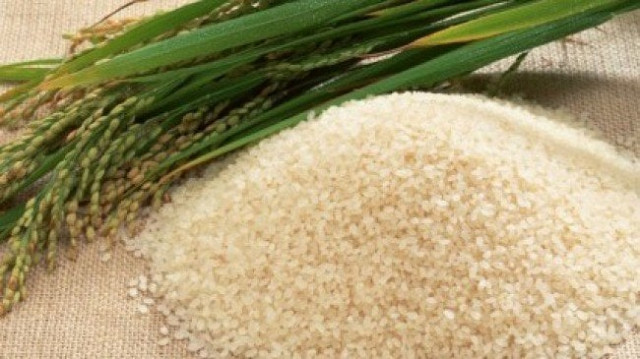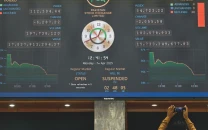Rice exports need more than lip service
GI tag alone cannot help boost earnings; Pakistan also needs to fetch better prices

Banks’ lending to rice processing mills more than doubled to Rs57 billion in Jul-Dec 2020 from Rs26.5 billion in Jul-Dec 2019, according to the latest statistics released by the State Bank of Pakistan (SBP).
However, this huge growth in lending to rice millers came in the form of restructuring of old loans under the special financial stimulus package announced by the SBP in March 2020 to mitigate the economic fallout of Covid-19 pandemic.
That’s why despite this massive lending – and that too at low interest rates – rice exports did not rise. In fact, Pakistan exported a little below 1.825 million tonnes of Basmati and non-Basmati rice in Jul-Dec 2020, against exports of 2.083 million tonnes in the same period of 2019, according to the Pakistan Bureau of Statistics (PBS).
Variety-wise, exports of Basmati showed a much sharper decline, from 428,590 tonnes in Jul-Dec 2019 to 265,672 tonnes in Jul-Dec 2020. Exports of non-Basmati rice also fell from about 1.61 million tonnes to 1.559 million tonnes. In terms of value, total rice export earnings slipped from $1.033 billion to $963.4 million, the latest PBS data shows.
So, what actually happened? And, is there any chance for Pakistan to recoup the export losses and boost its annual rice export earnings at the end of current fiscal year in June?
A breakdown of export data reveals that export earnings went down due to lower earnings from Basmati rice.
The decline in Basmati rice exports was so sharp (down from $381 million in Jul-Dec 2019 to $263 million in Jul-Dec 2020) that it even diluted a rise (from $652 million to $700.7 million) in export earnings from non-Basmati types of rice. So, the real issue is with the Basmati rice.
Rice exporters say from now onwards Basmati exports will likely increase as they earlier suffered a fall in shipments when India mischievously applied for a geographical indication (GI) tag for what it had presented to the world as Basmati rice. Exports of Pakistani Basmati were being blocked by some European countries due to Indian lobbying on this ground.
On Jan 26, 2021, Adviser to Prime Minister on Commerce Abdul Razak Dawood announced that Pakistan had successfully got its GI tag for Basmati. This means Pakistan can now export its Basmati rice more freely to those European countries and its Basmati shipments to European countries will likely increase.
Export price
But this alone cannot help boost Basmati rice earnings. Pakistan also needs to ensure that Basmati rice fetches a higher average export price.
During Jul-Dec 2020, the average export price for Pakistani Basmati stood at $990 per tonne. Divide it by one thousand and you get an average price of 99 cents per kg. It is humiliatingly low.
Are we exporting Basmati rice below Rs160 per kg? (One US dollar currently stands at less than Rs160).
Unbelievable! In local markets, even the most ordinary varieties of Basmati are selling for Rs200 per kg and above. It doesn’t make sense. Either exporters are understating the actual price of Basmati being exported or they are exporting Basmati at throwaway prices just to keep their share in global rice markets.
In either case, the Ministry of Commerce must investigate the matter. If understatement of export prices is established in case of some exporters, they must be taken to task.
And, if it is established that some of them are selling Basmati to global markets too cheaply just to retain their market share, Pakistan’s trade counsellors abroad and the Trade Development Authority of Pakistan must help them do better marketing and fetch higher prices.
Now, consider another point. A recent meeting on agricultural reforms, presided over by Prime Minister Imran Khan, noted that per-hectare yields of Pakistan’s major crops remain too low. According to the Economic Survey of Pakistan, the national average yield of rice stood at 2.44 tonnes per hectare. Officials of the Ministry of National Food Security and Research told the meeting on agricultural reforms that the average per-hectare yield of rice in India was almost double.
A low yield keeps the overall rice production and the exportable surplus – after feeding the local population – static.
Last year, Pakistan had initially reported 7.4 million tonnes of rice production and this year too it expects almost the same output. The US Department of Agriculture estimates that Pakistan actually produced 7.2 million tonnes last year, though it doesn’t challenge the current year’s output projection of 7.2 million tonnes.
Export share in GCC
With Pakistan having regained its GI tag for Basmati rice, exports of Basmati varieties are sure to pick up to the EU region but that alone will not be enough for big volumetric gains in Basmati exports and, in turn, the overall rice exports.
Much depends on keeping and increasing Pakistan’s rice export share in Saudi Arabia and the UAE from where about one-fifth of Pakistan’s total rice export earnings originate. Luckily, in these two countries, almost the entire demand is for Basmati rice and very little or no demand for non-Basmati varieties.
But due to an obvious geostrategic shift in ties between these two countries and Pakistan, retaining or increasing the market share in Saudi Arabia and the UAE is becoming extremely difficult. That’s why we are not only witnessing a declining trend in rice export earnings from these nations in absolute terms but also in percentage share.
In Jul-Dec 2019, Pakistan exported $210 million worth of rice or 19.5% of the total rice exports of $1.076 billion to these two Gulf Cooperation Council (GCC) nations. But in Jul-Dec 2020, rice exports to these two destinations fell to $134 million, or only 14% of the total $957.5 million.
The writer is a mechanical engineer and is doing masters
Published in The Express Tribune, February 22nd, 2021.
Like Business on Facebook, follow @TribuneBiz on Twitter to stay informed and join in the conversation.



















COMMENTS
Comments are moderated and generally will be posted if they are on-topic and not abusive.
For more information, please see our Comments FAQ